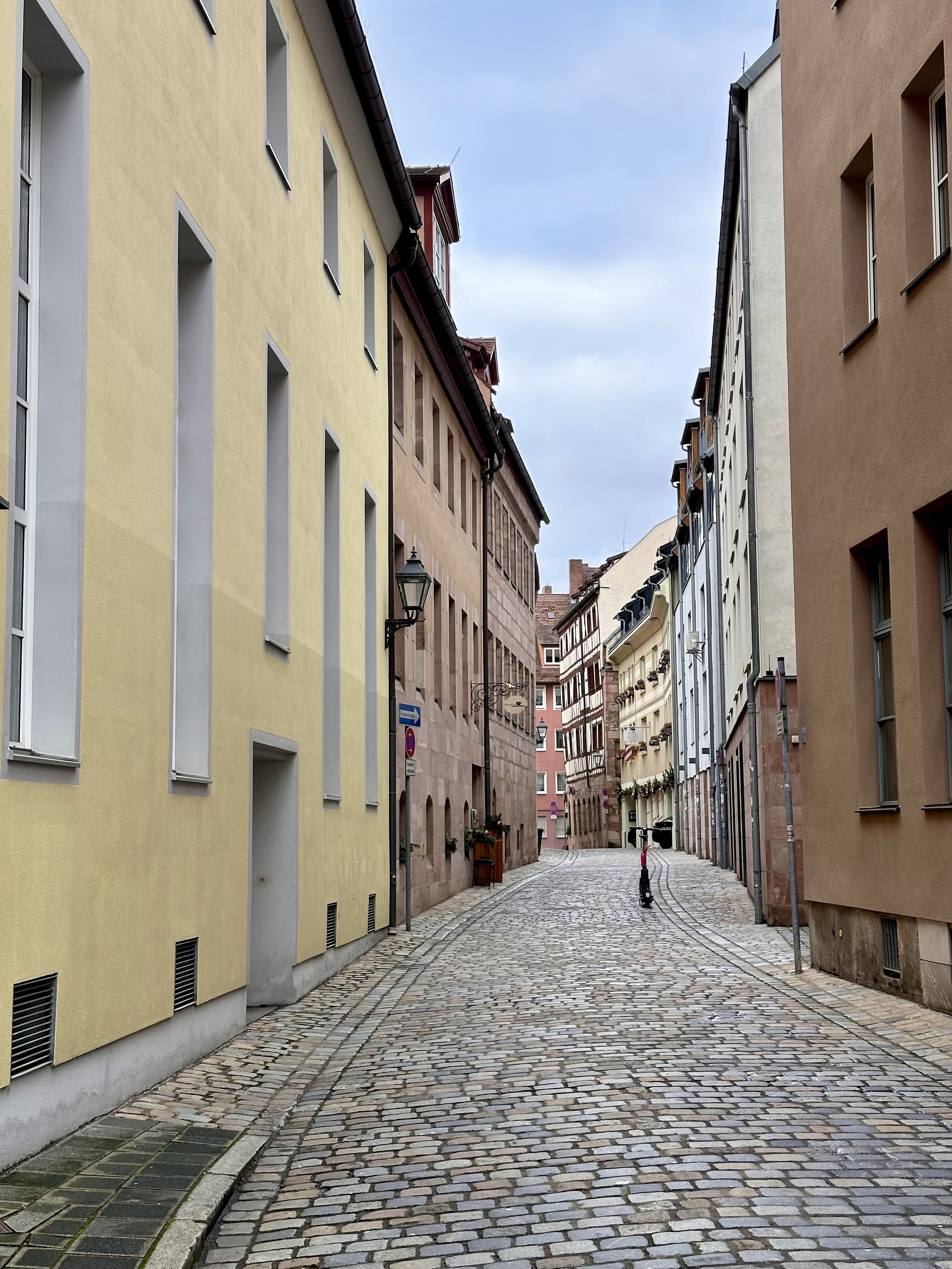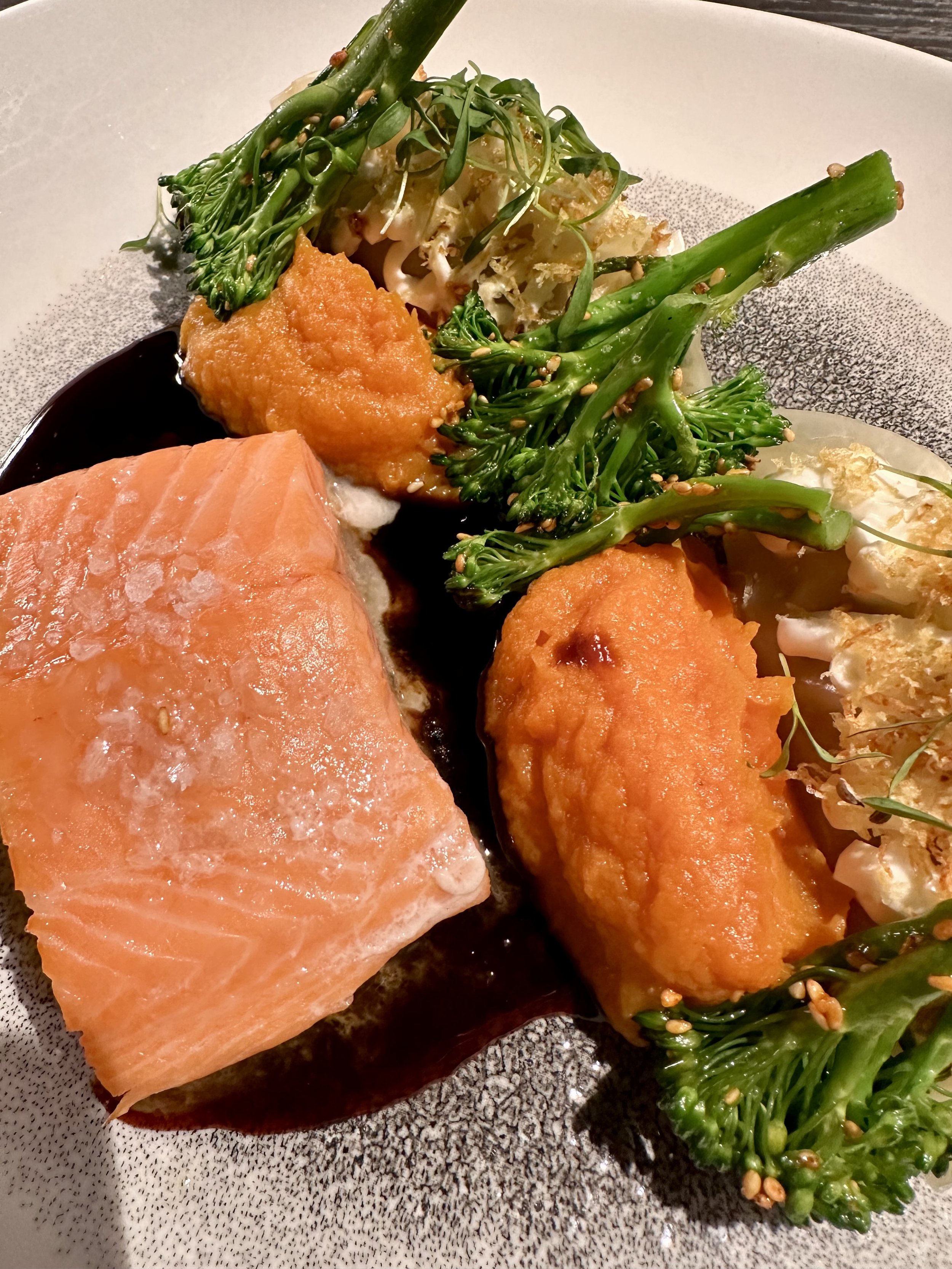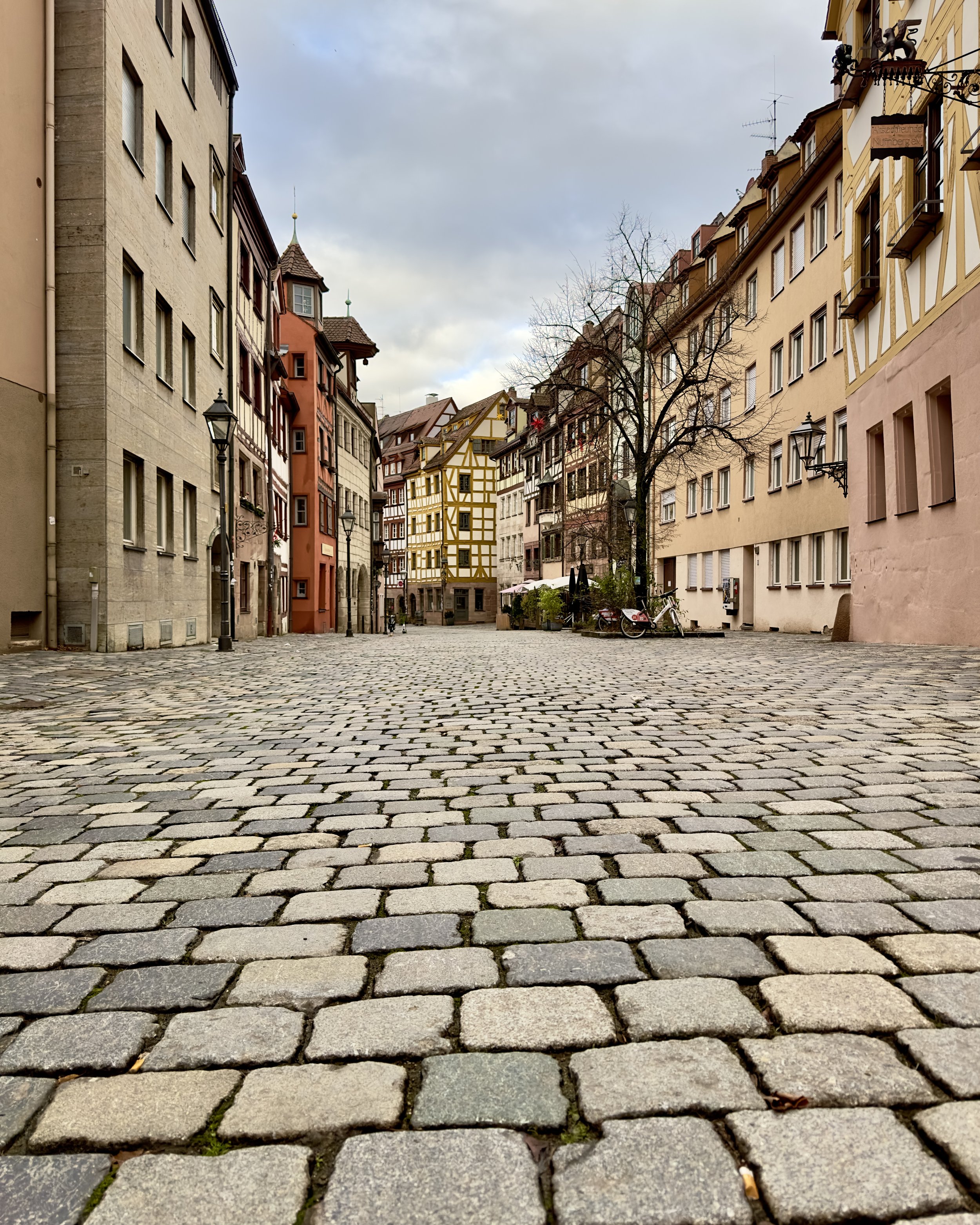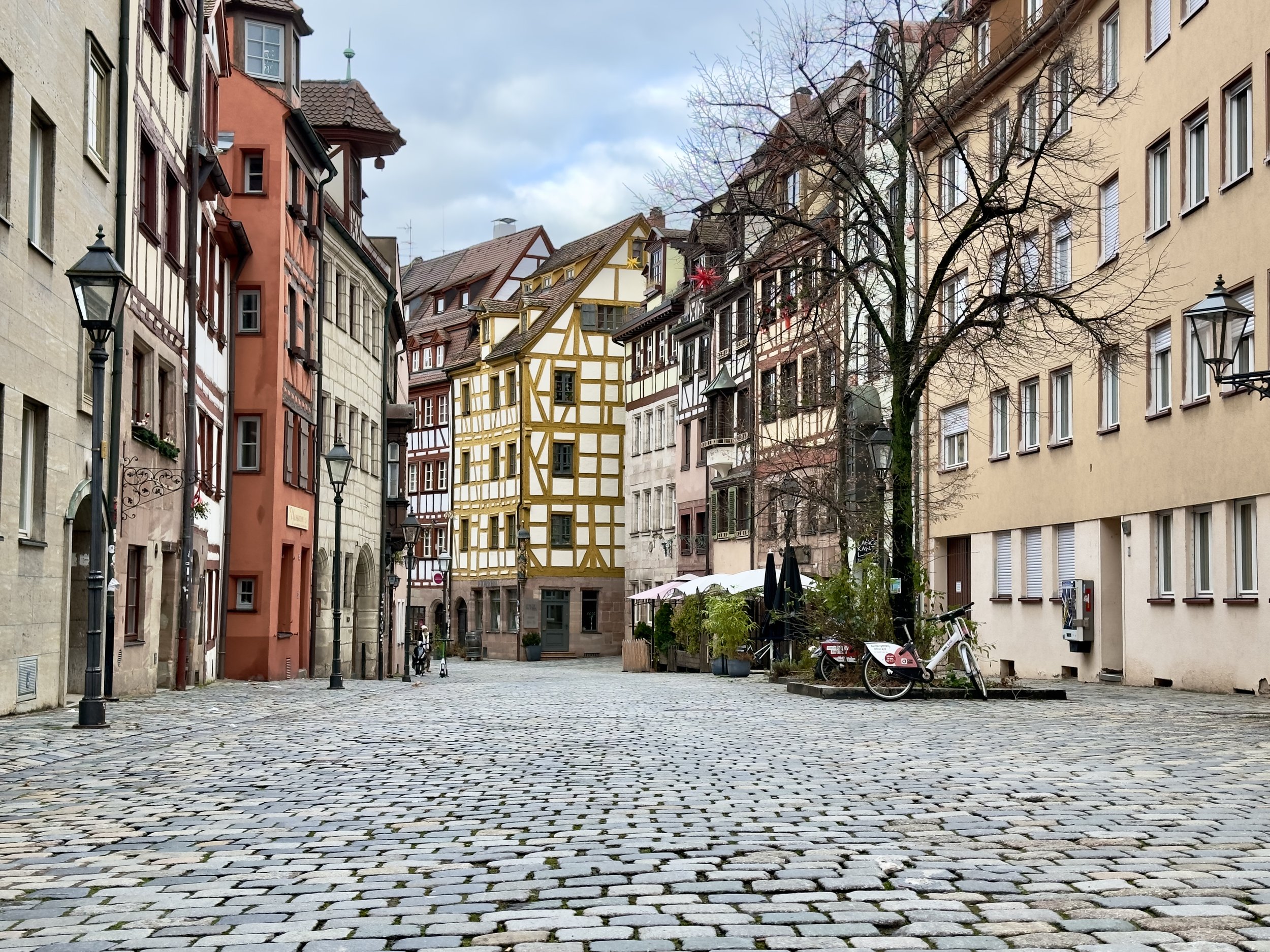My Photography & Travel Guide to Nuremberg, Germany
Nuremberg is the kind of place that quietly surprises you. At first glance, it feels like a page from a storybook—timber-framed houses, cobbled lanes, a castle perched high above the rooftops. But spend a little time here, and you’ll find a city with real depth, where every corner holds a contrast: beauty and history, light and shadow, the timeless and the unresolved.
For photographers, it’s a gift: the early morning light along the Pegnitz River, the textures of centuries-old architecture, the glow of lanterns during the Christmas market. Whether you're shooting street scenes in the Old Town or details inside Albrecht Dürer’s home, Nuremberg rewards a thoughtful eye.
But this isn’t just a place to take pictures—it’s a place that invites reflection. It’s compact, easy to explore on foot, and full of joyful and sobering layered stories.
This Photography Guide to Nuremberg offers travel tips for photographers of all levels, along with the best photography spots in Nuremberg, where to stay, what to eat, and when to go.
Where to Stay in Nuremberg
For the full Nuremberg experience, stay in or near the Altstadt (Old Town)—it’s walkable, picturesque, and central to nearly every attraction.
Luxury Hotels in Nuremberg
Hotel Drei Raben: A boutique hotel themed around Nuremberg’s myths, located just steps from the historic center.
Le Méridien Grand Hotel Nuremberg: A historic luxury hotel right across from the train station with easy access to the Old Town.
Park Plaza Nuremberg: Modern interiors housed in a restored 19th-century building near Königstor.
Mid-Range Hotels in Nuremberg
Hotel Victoria: Family-owned with an unbeatable location inside the medieval walls.
Hotel Elch Boutique: A cozy, photogenic hotel with timbered charm near Albrecht Dürer’s House.
Sorat Hotel Saxx Nuremberg: Clean design and excellent views of Hauptmarkt.
How Many Days to Stay in Nuremberg?
Spend 2 to 3 days in Nuremberg to enjoy both the major photography spots and hidden gems without rushing.
Altstadt (Old Town)
Best Time to Visit Nuremberg
Spring (April–May): Cherry blossoms around the city walls, mild temperatures, fewer tourists.
Autumn (September–October): Crisp air, vibrant foliage, and dramatic skies—perfect for moody shots.
December: Visit for the Christkindlesmarkt, one of Europe’s oldest and most photogenic Christmas markets.
Altstadt (Old Town)
Getting Around Nuremberg
Nuremberg is compact and very walkable, especially within the Old Town.
Public transport (U-Bahn, trams, buses) is efficient and covers everything outside the center.
Uber and Bolt operate in Nuremberg but aren’t always necessary unless you're heading to suburban sites or the airport.
Bike rentals are also available through Nextbike.
Altstadt (Old Town)
Where to Eat & Drink in Nuremberg
Dining Spots
Essigbrätlein: Two-Michelin-starred, hyper-local fine dining in a 16th-century building.
Albrecht-Dürer-Stube: Hearty Franconian classics in a charming, timbered house.
CôCô - Indochine: A flavorful Vietnamese-French fusion bistro.
Zeit & Raum: Inventive seasonal plates and a great wine list in a casual setting.
Hausbrauerei Altstadthof: Local brews, sausages, and cellar tours.
Coffee Shops
Machhörndl Kaffee: Third-wave coffee roasters with rich espresso and beautiful interiors.
Kaffe Hörna: Swedish-style café tucked away on a quiet street.
Café Mainheim: Stylish and warm, ideal for editing photos over a cappuccino.
Altstadt (Old Town)
What Photography Gear to Bring to Nuremberg
Camera Bodies: Canon EOS R5, Nikon Z7 II, Sony A7R V
Lenses:
Wide-Angle (16–35mm): for architecture and cityscapes
Mid-Zoom (24–70mm): all-purpose shots
Telephoto (70–200mm): for compressing medieval streets and capturing market details
Tripod: Essential for early morning or evening shots from the castle or riverside.
ND Filter: For long exposures at dusk or water shots.
Drone: Permitted outside the Altstadt—always check local regulations.
Top Photography Spots in Nuremberg
Kaiserburg Castle: Go at sunrise for panoramic shots over the red rooftops.
Weißgerbergasse (Tanners' Lane): A candy-colored street perfect for wide-angle storytelling.
Hauptmarkt & Frauenkirche: Best early in the morning before crowds or during December's golden-hour market magic.
Albrecht Dürer’s House: Combine history and aesthetics with a low-angle perspective.
Henkersteg & Hangman’s Bridge: A moody spot for late afternoon shadows and reflections.
Documentation Center Nazi Party Rally Grounds: Haunting but historically essential, offering stark architectural lines and storytelling opportunities.
Who Was Albrecht Dürer?
Born in Nuremberg in 1471, Dürer was a painter, printmaker, mathematician, and theorist—sort of a German Leonardo da Vinci. He was a pioneer of woodcuts and etchings, a master of self-portraiture, and one of the first artists north of the Alps to fully embrace the humanism and techniques of the Italian Renaissance.
He traveled widely, studied perspective, anatomy, and proportion, and helped raise the status of the artist from craftsman to intellectual.
Why is he so important?
Printmaking Revolution: Dürer turned woodcuts and engravings into high art. His works were reproduced and distributed across Europe, essentially making him one of the first international art stars. His writings on geometry, perspective, and proportion influenced artists for centuries.
Pieces like The Four Horsemen of the Apocalypse, Melencolia I, and Praying Hands remain iconic, deeply detailed, and widely studied.
Festivals & Events
Christkindlesmarkt (Late Nov – Dec 24): World-famous Christmas market, great for low-light and street photography. The Christkindlesmarkt in Nuremberg is one of the most famous and oldest Christmas markets in the world, drawing over two million visitors each year—and for good reason.
It can get very busy
Here’s why it’s so iconic:
Centuries of Tradition: It dates back to at least 1628, and possibly earlier, making it one of the most historic Christmas markets in Europe. Locals often say, “It’s not Christmas until you’ve been to the Christkindlesmarkt.”
Picture-Perfect Atmosphere: Held in Hauptmarkt, the city’s main square, the market transforms Nuremberg’s medieval heart into a twinkling wonderland. Think timber stalls with red-and-white-striped roofs, the scent of roasting nuts and mulled wine, and the glow of lanterns reflecting off centuries-old buildings.
Locally Made Gifts: Unlike many commercialized markets, Christkindlesmarkt emphasizes handmade, regional crafts. You’ll find hand-carved wooden ornaments, beeswax candles, and delicate glass-blown angels—all sold by small, often family-run artisans.
Food You Can’t Miss: Try the Nürnberger Rostbratwurst—grilled sausages served three-to-a-bun—and the famous Lebkuchen, a spiced gingerbread that originated here. Wash it down with a warm Glühwein (mulled wine), served in collectible mugs that change each year.
In short, the Christkindlesmarkt isn’t just a market—it’s a living tradition, a cultural moment, and a visual feast that captures the heart of German holiday spirit.
Blaue Nacht (The Blue Night, May): An annual night-time art and light festival across the city.
Old Town Festival (Altstadtfest) (September): Folk music, Franconian food, and festive scenes.
Final Thoughts
Nuremberg may not shout for attention like Berlin or Munich, but it whispers in layers—through its medieval architecture, complex history, and storybook streets. It’s a city that rewards patience, curiosity, and a good eye for light.
Subscribe to my newsletter for more travel photography tips, gear guides, and destination inspiration.
📸 And if you enjoyed this guide to Nuremberg, you can explore my other Photography and Travel Guides here.











